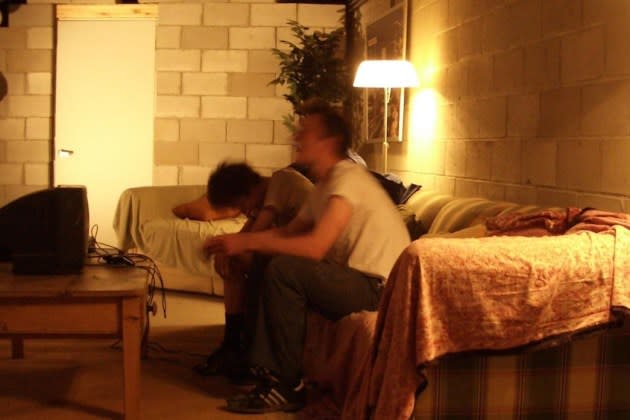‘Secret Mall Apartment’ Review: Offbeat SXSW Doc Is a Nice Place to Visit, but You Wouldn’t Want to Live There
- Oops!Something went wrong.Please try again later.

Some solutions to the housing crisis are more creative than others. For a group of artists in Providence, Rhode Island, that idea was put to the test when they infiltrated and inhabited a hidden alcove in their local mall for four years — a symbol of gentrification they repurposed into a decidedly anticapitalist communal space. The aptly named “Secret Mall Apartment,” directed by Jeremy Workman and executive produced by Jesse Eisenberg, is a thoughtful celebration of the DIY artistry behind that experiment, but only a so-so investigation of it.
Like a lot of great plans, this one was barely planned at all. After he and three of his friends decided to see who could pull off living inside Providence Place Mall the longest, Michael Townsend, drawing on a random memory of the building’s construction four years earlier, recalled a “nowhere space” where he and his cohort might find shelter: a tucked-away “anomaly in the architecture” that had clearly been empty for the entirety of the building’s existence. What was good enough for one night ended up being good enough for several, and four years later they were still there — until they weren’t.
More from Variety
'Mamífera' Review: Engaging, Well-Acted Spanish Drama About an Unexpected Pregnancy
Stormy Daniels Documentary 'Stormy' Is Now Streaming on Peacock
That these events took place in this specific mall was no coincidence. The Providence Place Mall opened in 1999 as part of an effort to revitalize the city’s economic activity, but many residents felt it wasn’t for them; some even noted its exact placement as a kind of dividing line between Providence’s upscale and undesirable neighborhoods. The space itself, a windowless annex with cinderblock walls, gives the impression of a low-budget sitcom set in its ramshackle construction, somehow cozy and cold all at once.
Taking up residence inside Providence Place wasn’t a matter of economic necessity so much as it was an exercise in being self-styled “micro-developers” making use of underutilized space. Townsend and his cohorts wanted to see if, and for how long, they could pull it off. They kept encouraging one another to take their experiment further in a half-serious, half-jokey manner until, gradually and then suddenly, they were furnishing the 750-square-foot space with a couch and sleeping there. And while filming activities that exist in a legal gray area isn’t generally considered a good idea, “Secret Mall Apartment” would not exist had Townsend not carried around a small, low-res camera with him pretty much everywhere throughout this period. Grainy footage of the group shimmying between narrow walls and gingerly hoisting their thrift-store sofa up a ladder give the documentary an appropriately lo-fi, lived-in vibe befitting their original intent.
The film is considerably less interesting when it isn’t directly about the actual apartment. A questionable amount of time seems devoted to convincing the audience of Townsend’s righteousness, with testimonials from loved ones and a segment on murals he made for a children’s hospital and a 9/11 memorial feeling especially hagiographic. At times it’s as though “Secret Mall Apartment” was expanded to feature length from a more focused short, with much of its middle section added after the fact.
There can also be a sense of slumming to the whole endeavor — nobody seems to have lived there full-time, with Townsend’s then-wife complaining in contemporaneous footage that she’d rather they work on their actual home instead of his passion project, making the space more of a clubhouse than an actual apartment. It isn’t until the end that the filmmakers question the impulses behind all this rather than taking its goodness as self-evident.
They do so by reconstructing the apartment on a soundstage and having Townsend reenact the moment he was finally caught, a lightly surreal sequence that resembles nothing so much as Nathan Fielder’s “The Rehearsal.” Capturing something through the lens of a camera has a tendency to make it feel both more and less real, which is entirely apropos of a four-year period in which a once-liminal space became something like a home.
Best of Variety
Sign up for Variety’s Newsletter. For the latest news, follow us on Facebook, Twitter, and Instagram.
